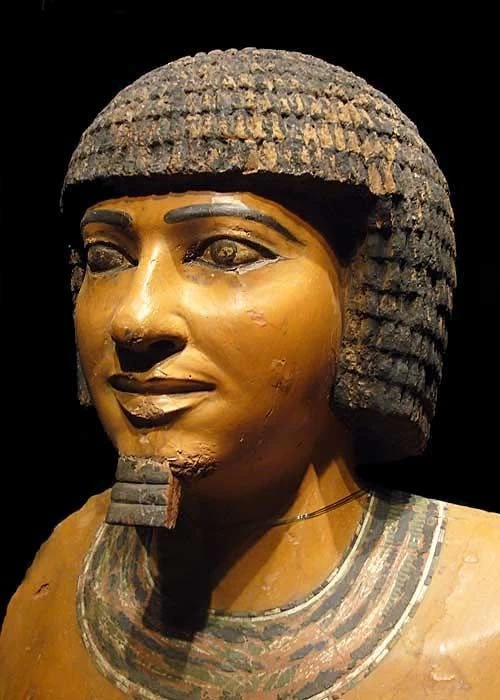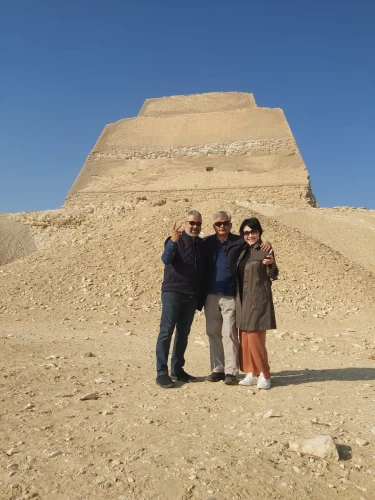
Imhetop, The First Architect
L'histoire des pharaons degypte
Le nom d'Imhotep signifie "celui qui vient en paix" et en l'affichant en plus de se consacrer, comme nous l'avons vu, à la médecine. Il a également étudié l'astronomie, pouvant se développer grâce à cette dernière connaissance des mathématiques et de la géométrie qui servirait d'architecte. Imhotep était un brillant architecte, mathématicien, médecin, astrologue, poète, prêtre et ministre en chef du pharaon Djoser dans l'Égypte ancienne.
Son nom a perduré jusqu'à ce jour, faisant de lui le premier scientifique. Il n'était pas seulement médecin, mais aussi mathématicien, ingénieur, architecte et astronome, démontrant qu'il possédait la compréhension pratique de la géométrie et de l'arithmétique nécessaire pour travailler dans ces domaines.
L'œuvre principale d'Imhotep était le complexe funéraire de la pyramide à degrés de Saqqarah, près de Memphis. Cette construction a nécessité l'extraction, le transport et la modélisation de littéralement des milliers de tonnes de calcaire, un matériau qui jusqu'alors n'avait jamais été utilisé dans les grandes constructions.
Le poids de ces pierres était un véritable cauchemar qu'Imhotep a résolu en utilisant de petits blocs faciles à transporter et à manipuler, créant la base rectangulaire de la pyramide de 140 x 118 mètres, avec son plus grand côté d'Est en ouest avec une hauteur d'origine de 60 mètres.
Imhotep a placé la chambre funéraire du roi Djéser au centre, au fond d'un puits de 28 mètres de profondeur et de sept mètres de large, construit avec du granit et du plâtre, et scellé avec un gigantesque bloc de granit de 3 500 kilos. Devenant l'idéal des Pyramides de Gizeh et celle des autres pyramides égyptiennes.
Son importance en tant que médecin réside dans le fait que ses enseignements ont été copiés dans un papyrus dans lequel toutes sortes de traitements pour les maladies ont été discutés, avec des prescriptions pharmacologiques, et bien qu'à cette époque la médecine et la magie se mélangeaient. Imhotep a été le premier à essayer d'enregistrer des cas cliniques, c'est-à-dire sans mentionner les causes ou les remèdes magiques, étant le premier à fournir une approche rationnelle du traitement des maladies et des blessures. Ses remèdes, découverts dans le soi-disant papyrus Edwin Smith, comprenaient l'utilisation de drogues comme stupeur, et de multiples observations anatomiques et pratiques chirurgicales ont également été enregistrées.
Dans le Nouvel Empire, il était vénéré comme le protecteur des scribes, représentant la sagesse et l'éducation. Dans les "Papyrus de Turin" de cette période, il est également décrit comme le fils de Ptah, le dieu principal de Memphis, en l'honneur de son rôle de sage conseiller.
On dit qu'il a extrait des médicaments des plantes et traité des maladies telles que l'appendicite, la goutte et l'arthrite. À Memphis, il était servi par son propre sacerdoce et il était considéré comme un médiateur entre les hommes et les dieux. On croyait qu'il pouvait aider les gens à résoudre des problèmes dans leur vie quotidienne et à guérir des problèmes médicaux.















